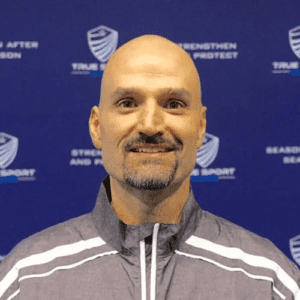Type ‘vertigo’ into Chat GPT and this is all you get…
Vertigo is a sensation of spinning or dizziness, often related to issues with the inner ear or the vestibular system. It can feel like you or your surroundings are moving when they aren’t. Common causes include:
- Benign Paroxysmal Positional Vertigo (BPPV): Small calcium crystals in the inner ear become dislodged.
- Meniere’s Disease: A disorder of the inner ear causing episodes of vertigo, hearing loss, and tinnitus.
- Vestibular Neuritis: Inflammation of the vestibular nerve, often following a viral infection.
- Migrainous Vertigo: Related to migraine headaches.
Treatment varies based on the underlying cause and can include medications, physical therapy, or lifestyle changes. If you’re experiencing vertigo, it’s a good idea to consult a healthcare professional for an accurate diagnosis and appropriate management.
On WebMD, you’ll get much of the same. The sad part is that there are other treatment options and one very obvious cause of vertigo, which I’m sure you can guess based on the fact that we’re chiropractors. The term “cervicogenic” shouldn’t scare you. Let’s break it down. ‘Cervico’ means pertaining to the cervical spine, and ‘genic’ comes from ‘genesis’ or originating from. Therefore, cervicogenic vertigo means vertigo that originates from the cervical spine. It could be purely osseous but is more likely a combination of muscular and osseous dysfunction.
I always like to relay a couple of anecdotal stories of patients who we were able to help. We had an MD, who has since retired, who would always send his vertigo patients our way. He would qualify them by pressing behind their ear on an area near the mastoid process. The ‘m’ in ‘mastoid’ is part of the SCM (sternocleidomastoid) muscle. We have noticed that this muscle is the main player in vertigo complaints when it is a musculoskeletal issue.
Can Your Vertigo be Treated with Crystal Repositioning Exercises?
Here are some ways that you can know if it is a crystal issue vs a muscle/bone issue. Think of a snow globe half filled with water. On the inside edge of the globe sits little hairs or sensors. When the globe is tilted and the fluid shifts positions, it will trigger some of those hairs, indicating a positional change. This is essentially what happens in the semicircular canals in the ear.
When you have crystals floating around, they may occasionally bump up against one of those sensors, making you feel like you’re changing positions when you’re actually not. This cause of vertigo can be addressed with crystal repositioning exercises. The goal is to get those crystals to an area in the inner ear (semicircular canals) where there are no triggers. Problem solved. This is not the type of vertigo we treat but we can figure out if it is or if it’s something else.
Is Your Vertigo Caused by Muscular Imbalances in the Neck?
Imbalances and asymmetries wreak havoc on the body in many ways other than simply aches and pains. The SCM (sternocleidomastoid) muscle specifically can cause headaches, migraines, ear pain, and a clogged ear sensation (like you’re underwater) to name a few. By correcting the imbalances with our exercise/soft tissue treatment, we can restore balance and reduce symptoms.
This brings me to our first example.
- Patient #1: A woman came down from the Southern Tier of New York because her friend, who had the same complaint, had a great result. When she lay down on the table she reported some symptoms. After she settled it abated. I then PASSIVELY rotated her neck to the left and to the right. I moved her head and continued to instruct the patient not to contract any muscles. She did not have any symptoms. I then asked her to rotate her own head using her muscles and her symptoms started. To me this meant that the muscular contraction caused the symptoms. If it was simply a crystal issue, I believe the symptoms would have started even if I moved her head without any muscle contraction. I don’t believe this is an official test; it’s just something I came up with to help with my investigation.
- Patient #2: A good friend was relaying a story about his elderly dad who just had eye surgery and was complaining of severe vertigo and nausea. He literally wasn’t eating and was losing weight. His quality of life was terrible, and the ophthalmologist said he couldn’t understand why he was experiencing any symptoms and that the surgery couldn’t be the reason. The dad was also a patient a while back but it had been a number of years since he had been in. Here was my thought process: Elderly guy with an elderly guy posture; a bit slouchy with a forward canted head. I’ve seen some eye surgeries in the past and you’re usually positioned face up with your neck extended so the surgeon can easily access the eyes. I didn’t think his neck would have liked that position, even for a short period of time. I said to the son, “Bring in your pop and let me give it a go. Two visits and we will know if we are onto something.” In this case, two visits were all we needed to resolve his symptoms.
- Patient #3: A Pilates client experiences vertigo, especially during class. We do notice that vertigo or neck pain in general is a common complaint of Pilates clients. Pilates does many movements that require a roll-up or roll-down of the spine. Pilates itself is a discipline that we normally recommend. In fact, we usually say that Pilates is an EXTENSION of therapy. Pilates instructors are incredibly knowledgeable about imbalances and deficiencies. Many also possess advanced degrees in exercise science or even physical therapy. If you experience neck pain or vertigo from your Pilates work, don’t give up. Pop in and we can investigate the ACTUAL cause, then teach you how to fix it so that you can enjoy the many benefits that Pilates has to offer.
At-Home Test to Identify Whether Your Vertigo is Caused by Muscular Imbalances
I do have an associated video I made so you can test yourself and potentially FIX yourself. Sometimes you’ll need some soft tissue work or a good adjustment to help the situation, but it doesn’t hurt to try this exercise:
- Lying in bed in the supine position (face up), rotate your head to one side.
- Once you’re fully rotated, lift your head off of the pillow and hold for fifteen to twenty seconds. Make sure you are NOT clenching your jaw! Also make sure the movement is ONLY coming from the neck and you’re not doing a quarter of a sit up.
- Remember how heavy the head feels. Then you can rest.
- Switch sides and repeat the same exact (mirror image) exercise and compare the weight of the head in both configurations. Remember to not clench or do that quarter sit-up.
- If your head feels heavier in one direction, you have a weak SCM muscle. Perform an additional two sets of twenty to thirty seconds each on the weak side.
The moral of the story is we are a great FIRST step in figuring out your vertigo symptoms. The MD who always referred to us felt the same way. If we aren’t fixing it in the first few visits, then you can investigate the crystal issue, or other inner ear dysfunction.



